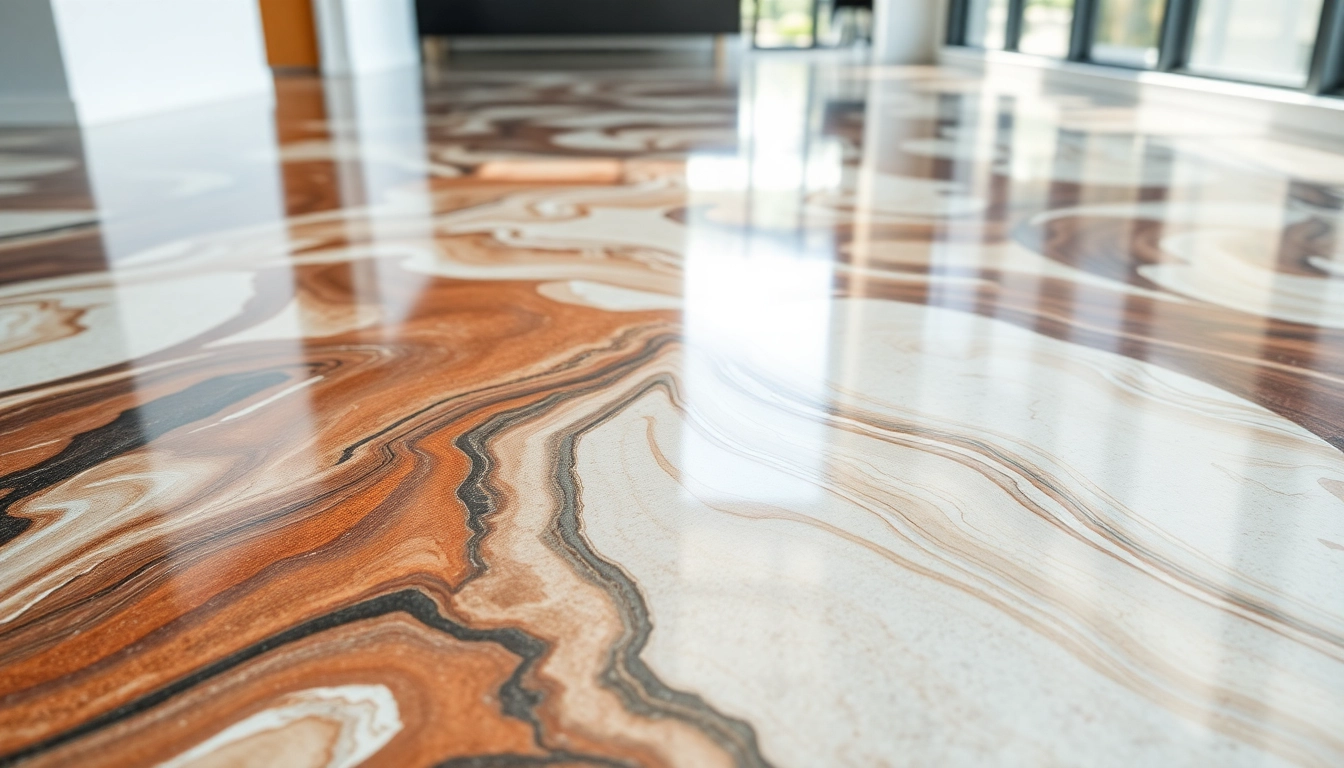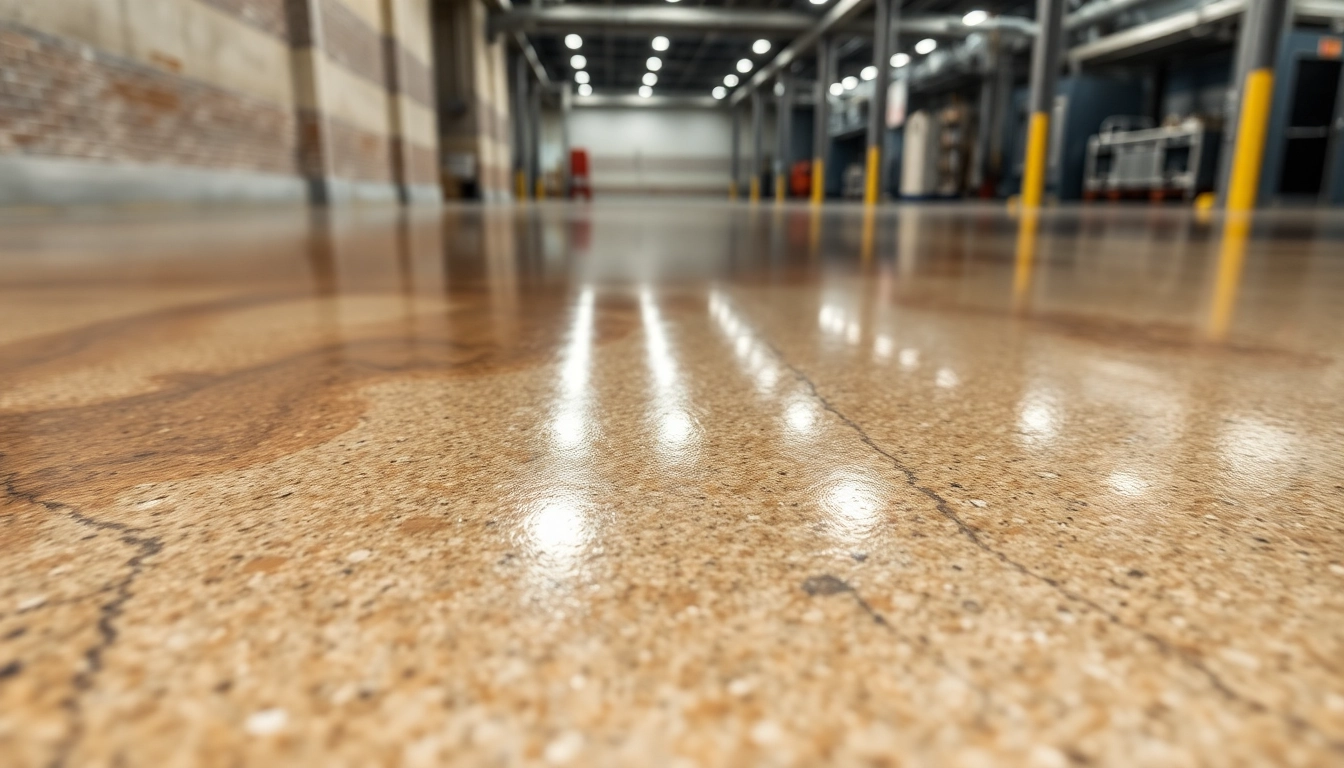Introduction to Epoxy Resin Floors and Their Benefits
Epoxy resin floors have become one of the most popular solutions for both commercial and residential spaces due to their exceptional durability, aesthetic appeal, and versatility. At their core, these floors are constructed by applying a layer of epoxy resin—a high-performance polymer—over substrates like concrete. This creates a seamless, hard-wearing surface that can withstand heavy traffic, chemical spills, and environmental stresses. For homeowners and business owners alike, understanding the potential of an epoxy resin floor can open up new opportunities for transforming spaces into functional and visually impressive environments.
In this comprehensive guide, we will explore what makes epoxy resin floors a smart choice, delve into customization options, discuss the installation process, examine cost considerations, and look ahead to future innovations shaping this industry.
What Is an Epoxy Resin Floor?
An epoxy resin floor is a surfacing solution where a resinous material is chemically bonded to a concrete or other substrate to form a smooth, resilient surface. The epoxy mixture typically includes resin and a hardener, which react to form a strong, durable coating. These floors can be formulated for different levels of chemical, impact, and abrasion resistance, making them ideal for various settings. They can be self-leveling, creating a perfectly flat surface, or textured, providing slip resistance when needed.
Compared to traditional flooring options such as tiles, carpets, or paint, epoxy floors offer a seamless and monolithic surface, reducing joints and crevices that trap dirt and bacteria. This makes cleaning and maintenance easier, enhancing hygiene and longevity.
Advantages Over Traditional Flooring Options
Epoxy resin floors stand out due to several compelling advantages:
- Exceptional durability: They are highly resistant to mechanical wear, chemicals, and stains, making them suitable for high-traffic areas.
- Seamless finish: Unlike tiles or carpets, epoxy creates a continuous surface without joints, which minimizes dirt accumulation and simplifies cleaning.
- Cost-effective: Though initial costs may be comparable or slightly higher than traditional options, their long lifespan and low maintenance requirements lead to significant savings over time.
- Aesthetic versatility: Wide range of colors, patterns, and finishes allow for customization to match any décor or branding.
- Quick installation: Modern epoxy systems cure rapidly, enabling quick project completion with minimal disruption.
- Environmental resistance: They withstand water, moisture, and varying temperatures, ideal for environments like garages, warehouses, and kitchens.
Common Applications in Residential and Commercial Settings
The adaptability of epoxy resin floors makes them suitable for numerous environments:
- Industrial facilities: Manufacturing plants, warehouses, and distribution centers utilize epoxy floors for their chemical and impact resistance.
- Commercial spaces: Retail stores, showrooms, and supermarkets benefit from their aesthetic customization and durability.
- Healthcare and laboratories: Hygiene is critical, and seamless epoxy floors meet strict sanitary standards.
- Residential garages and basements: Epoxy creates an attractive, easy-to-clean surface resistant to stains and cracking.
- Educational institutions: Classrooms and hallways require durable, low-maintenance solutions, making epoxy floors an ideal choice.
Design Options and Customization of Epoxy Resin Floors
Colors, Patterns, and Textures Available
The aesthetic flexibility of epoxy resin flooring is one of its most attractive features. Available in virtually any color, epoxy coatings can be solid, metallic, or contain embedded decorative elements like quartz or glitter. Textures range from high-gloss mirror-like finishes to matte or textured surfaces that improve slip resistance. Patterned designs, including logos or geometric motifs, can be incorporated to enhance branding or aesthetic appeal.
Creating Aesthetic Effects Like Marble and Metallic Finishes
One of the most popular customization trends is mimicking the luxury look of marble or creating stunning metallic effects. This is achieved using special pigments, metallic powders, and techniques like feathering or swirling. Such finishes transform basic resin layers into eye-catching statements suitable for upscale showrooms or modern living spaces. Some systems even allow for 3D visual effects, providing depth and dimension to the floor surface.
Choosing the Right Design for Your Space
Design selection should align with the functional requirements and aesthetic goals of your space. For example, a high-traffic commercial area benefits from a textured, slip-resistant surface, while a boutique retail store may prioritize a polished, shiny finish that highlights brand identity. Consulting with flooring specialists can help you identify the best options based on durability, safety, and aesthetics.
Installation Process and Tips for a Perfect Finish
Preparation and Surface Requirements
Preparation is crucial for achieving a professional, long-lasting epoxy floor. The substrate must be structurally sound, clean, dry, and free from grease, oils, or delaminations. Grinding or shot blasting may be necessary to remove surface imperfections and create a rough profile that enhances bonding. Moisture levels should be checked, and any cracks or damages repaired prior to application.
Step-by-Step Installation Guide
- Surface cleaning and preparation: Remove all dust, debris, and contaminants.
- Priming: Apply a primer to improve adhesion; this step is vital especially on porous or damp substrates.
- Base coat application: Mix and apply the epoxy resin evenly using a roller or squeegee for self-leveling systems.
- Decorative elements (if desired): Add flakes, metallic pigments, or other decorative features during curing or finishing stages.
- Topcoat finishing: Apply the final protective layer for gloss, UV stability, and enhanced durability.
- Curing and drying: Allow adequate curing time, typically 24-72 hours, depending on environmental conditions.
Maintenance and Durability Tips for Long-Lasting Floors
Proper maintenance extends the lifespan of your epoxy floor. Regular cleaning with pH-neutral detergents prevents dirt buildup. Promptly clean spills to avoid staining or chemical damage. Avoid using abrasive scrubbers or harsh chemicals that could deteriorate the coating. Periodic resealing or re-coating may be necessary to maintain gloss and protective qualities, especially in high-traffic environments.
Cost, Materials, and Quality Considerations
Budget-Friendly Epoxy Kits vs. Professional Installation
DIY epoxy kits are available at a range of prices, often starting as low as $60 for small projects. These can be suitable for smaller areas or hobbyists but require careful preparation and application skills to avoid issues like bubbles or uneven finishes. Professional installation ensures expert surface preparation, precise mixing, and application, often resulting in a higher upfront cost but a more durable and aesthetically superior finish. For larger or commercial projects, hiring a seasoned contractor can save time and prevent costly mistakes.
Materials to Ensure High-Quality, Chemical-Resistant Floors
Choosing premium-grade epoxy resins with proven chemical and impact resistance is essential for high-performance floors. Reputable brands offer formulations with enhanced UV stability, low VOCs, and ease of application. Supplementary materials like flake aggregates, color pigments, and topcoats further enhance durability and appearance. Always verify product ratings and reviews to ensure quality compliance.
Evaluating Brands and Product Ratings for Optimal Results
When selecting epoxy products, consider factors such as curing time, compatibility with ambient conditions, safety data sheets, and user feedback. Products rated highly (above 4.5 stars) with extensive positive reviews generally indicate reliable performance. Consulting industry professionals or suppliers can provide insights into the best solutions tailored to your specific needs.
Future Trends and Innovations in Epoxy Resin Flooring
Eco-Friendly and Sustainable Epoxy Options
With increasing environmental awareness, manufacturers are developing epoxies with lower VOC emissions, bio-based resins, and recyclable components. Plant-based epoxy alternatives are gaining popularity for their sustainability without compromising performance, offering a greener solution for conscientious consumers.
Advanced UV and Impact-Resistant Formulations
Future innovations aim to improve UV stability, preventing yellowing and degradation under sunlight exposure, as well as enhancing impact resistance to withstand more aggressive conditions. These developments extend the lifespan and aesthetic integrity of epoxy floors in outdoor and high-use environments.
Integration with Smart Home and Automation Systems
Emerging trends include embedding sensors within epoxy surfaces for temperature monitoring, load sensing, or data collection—integrating flooring into smart home and building management systems. Such advancements enable proactive maintenance and enhanced safety features.



